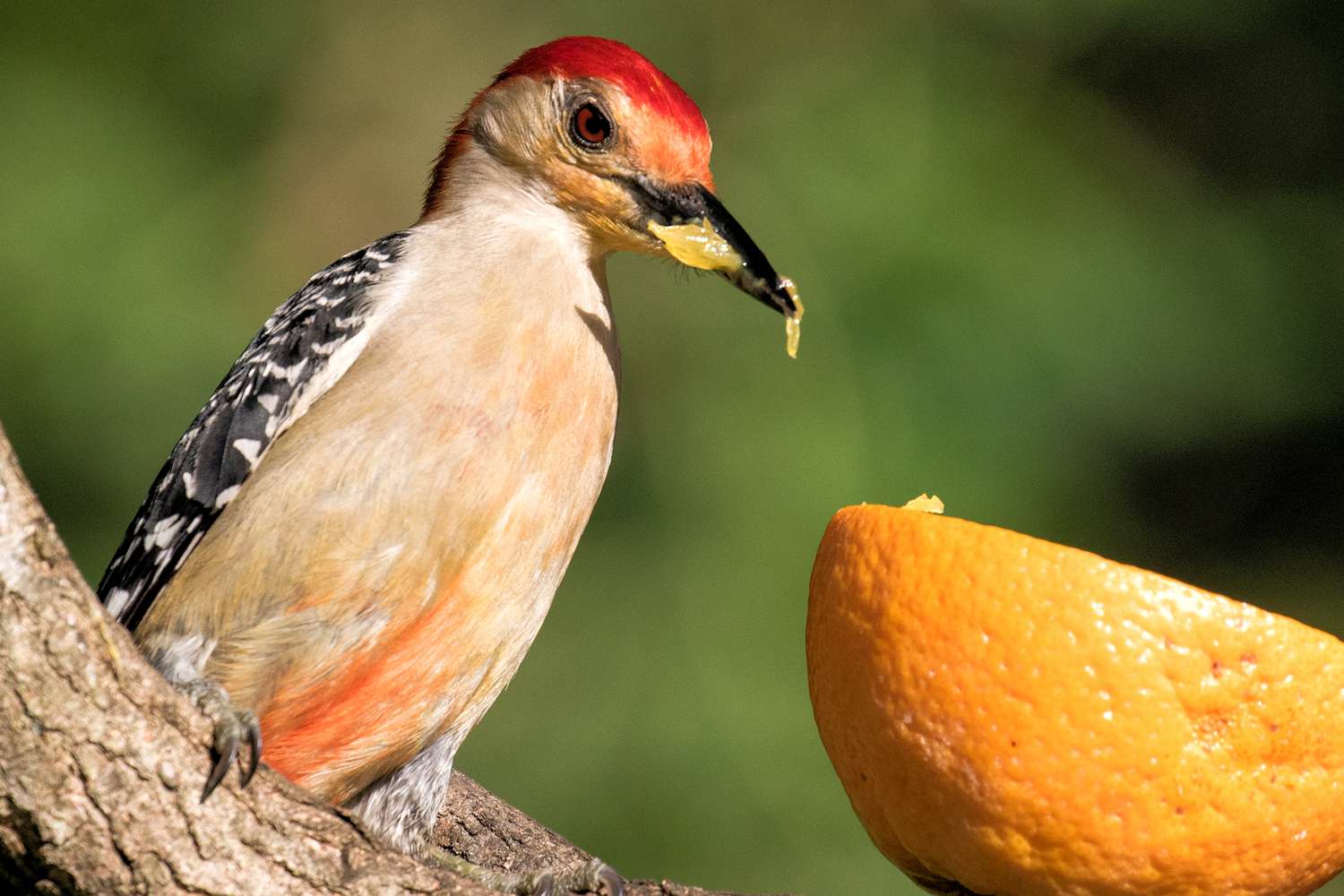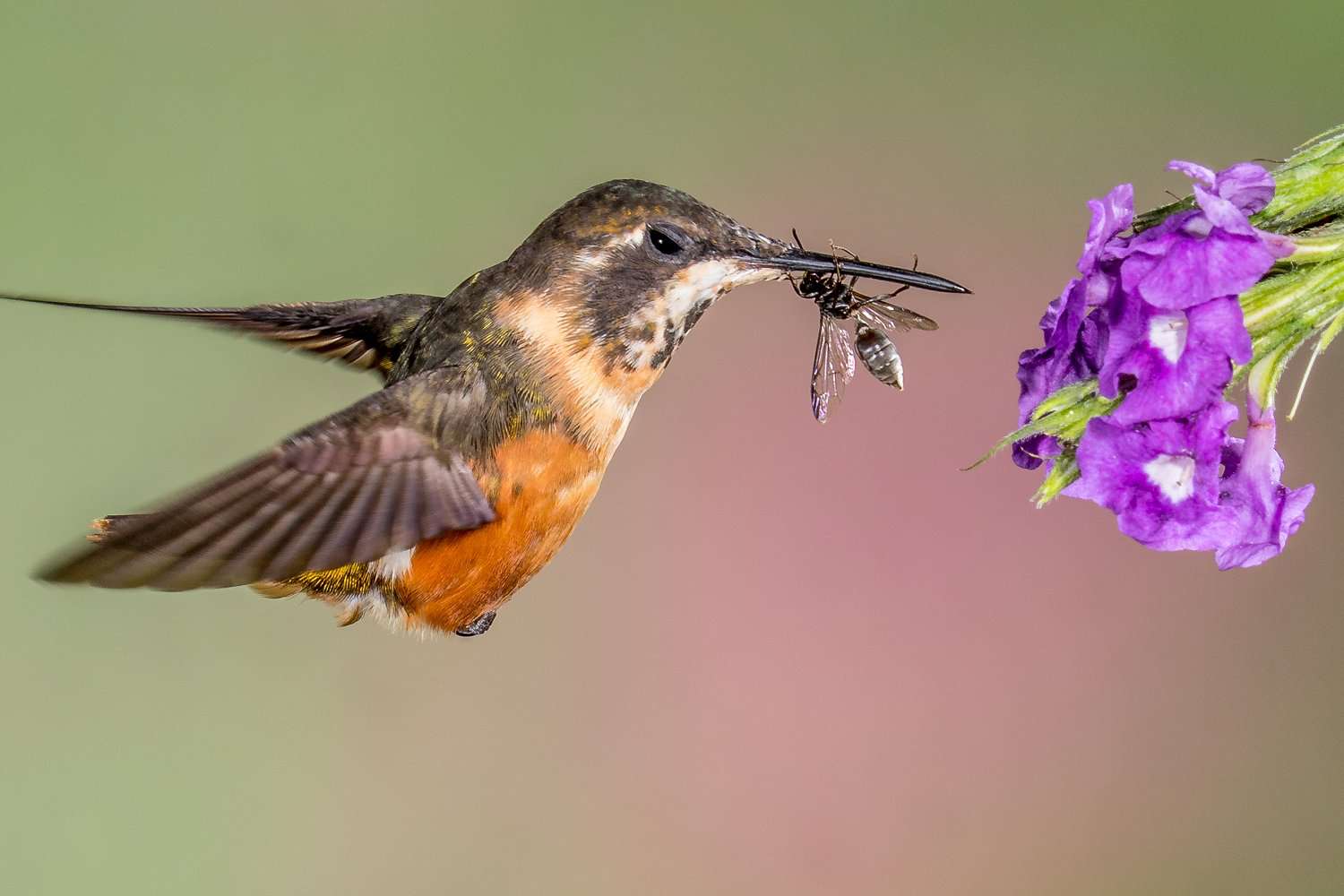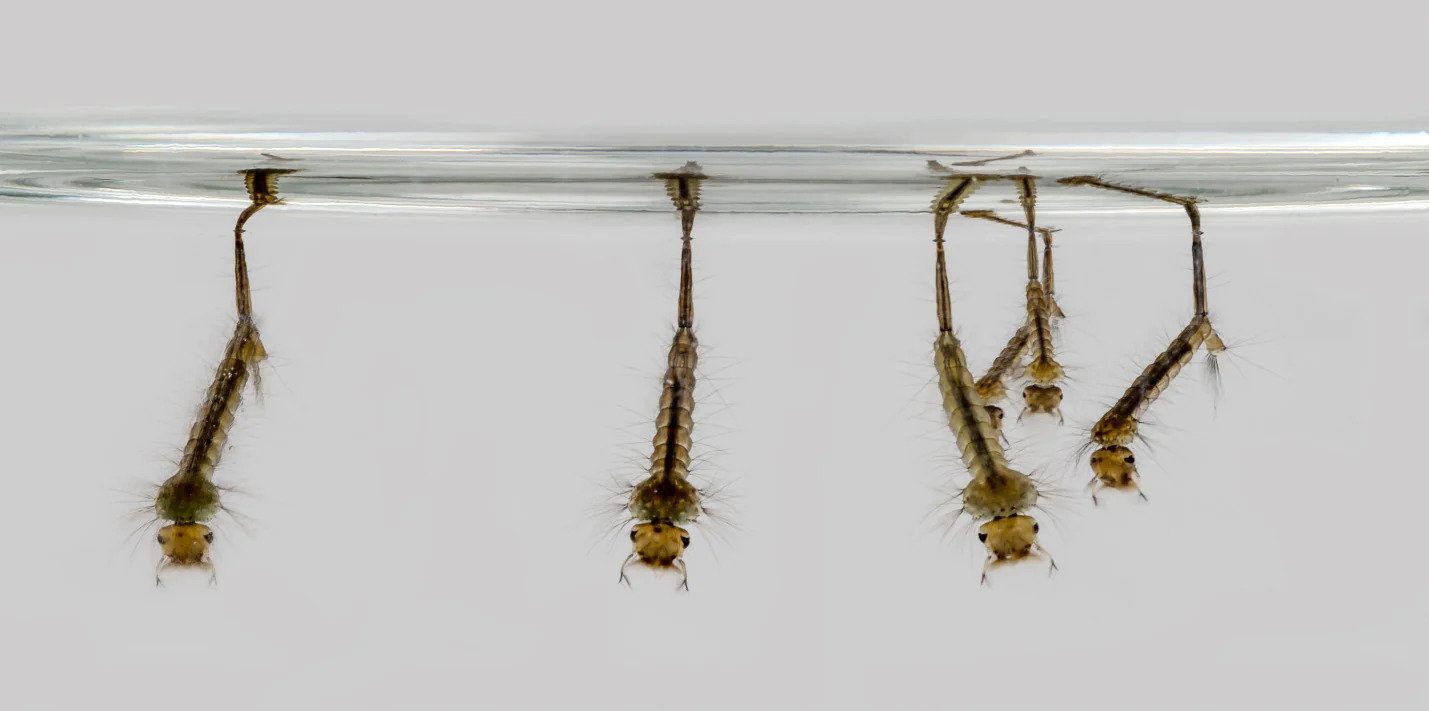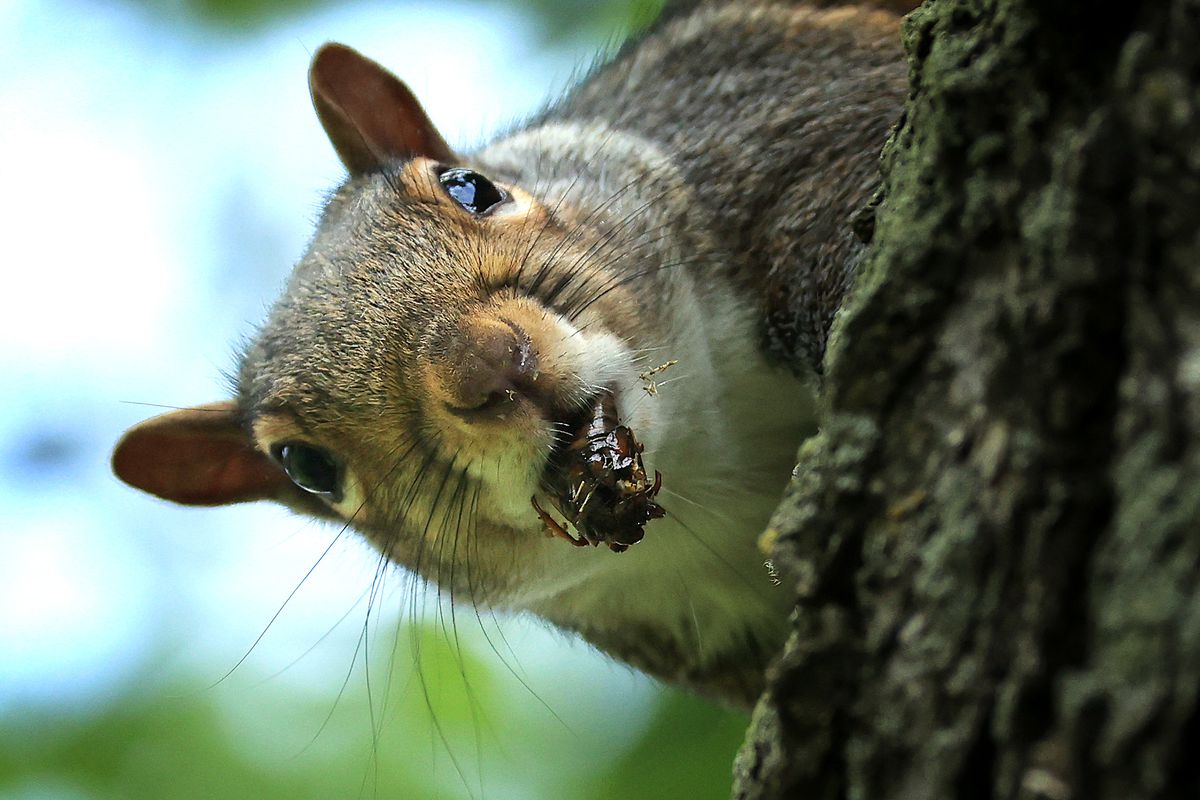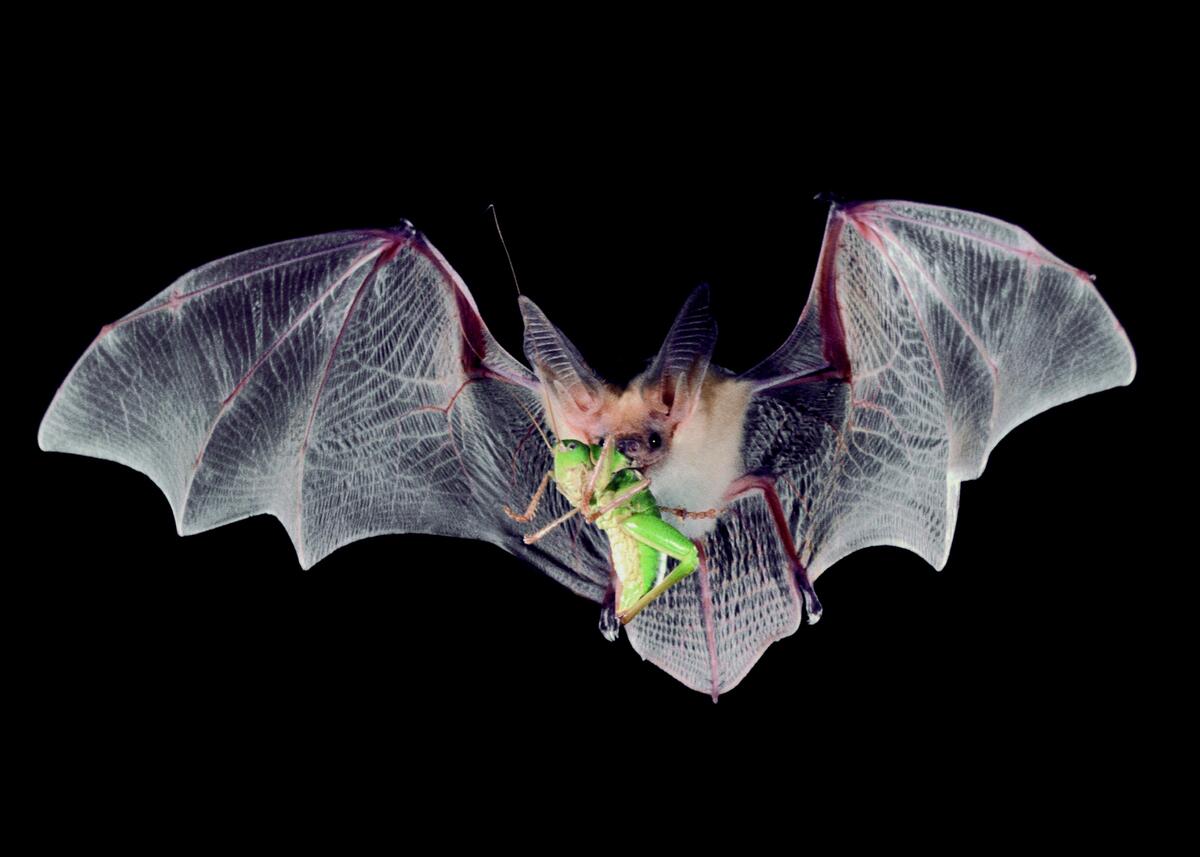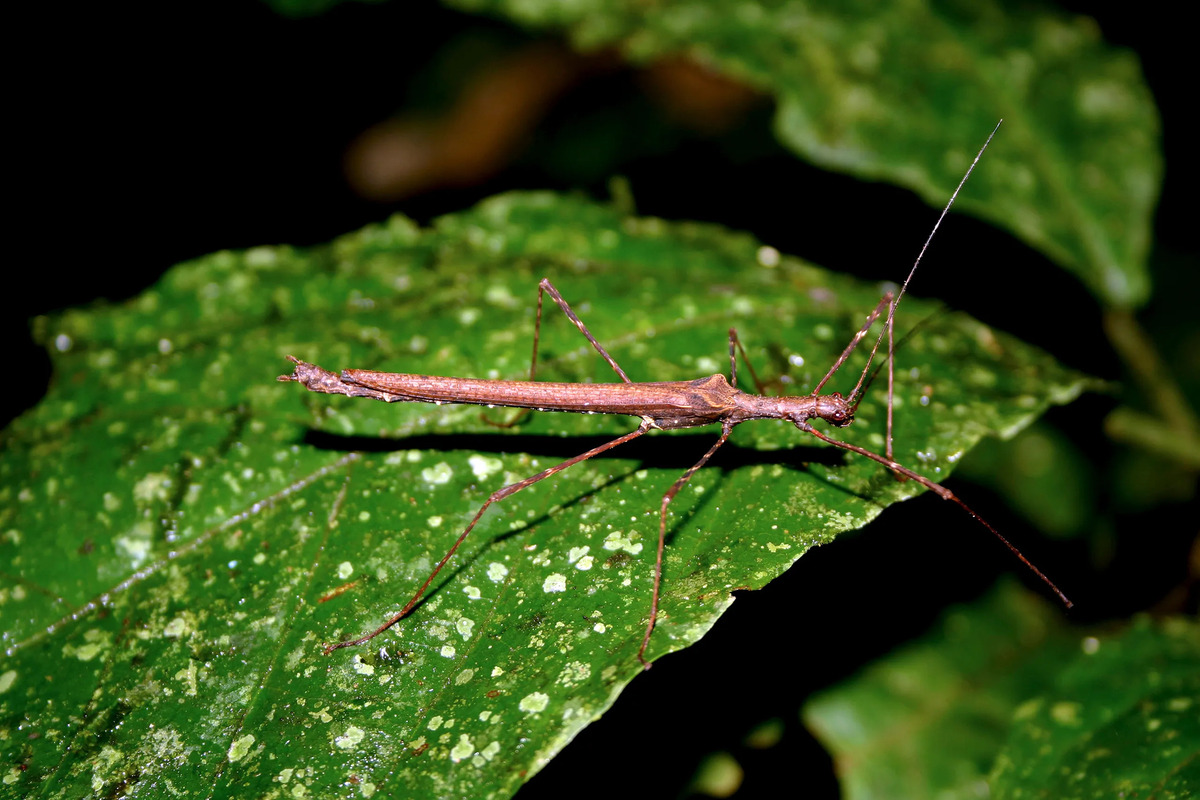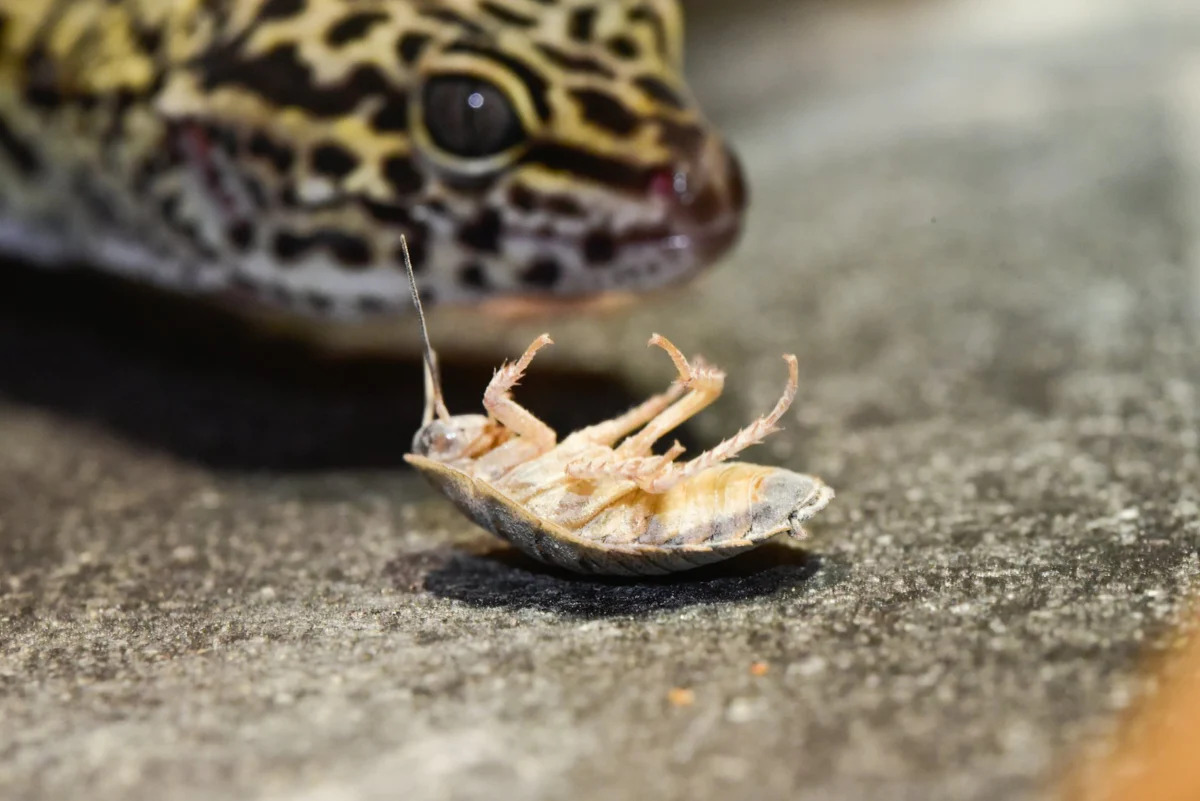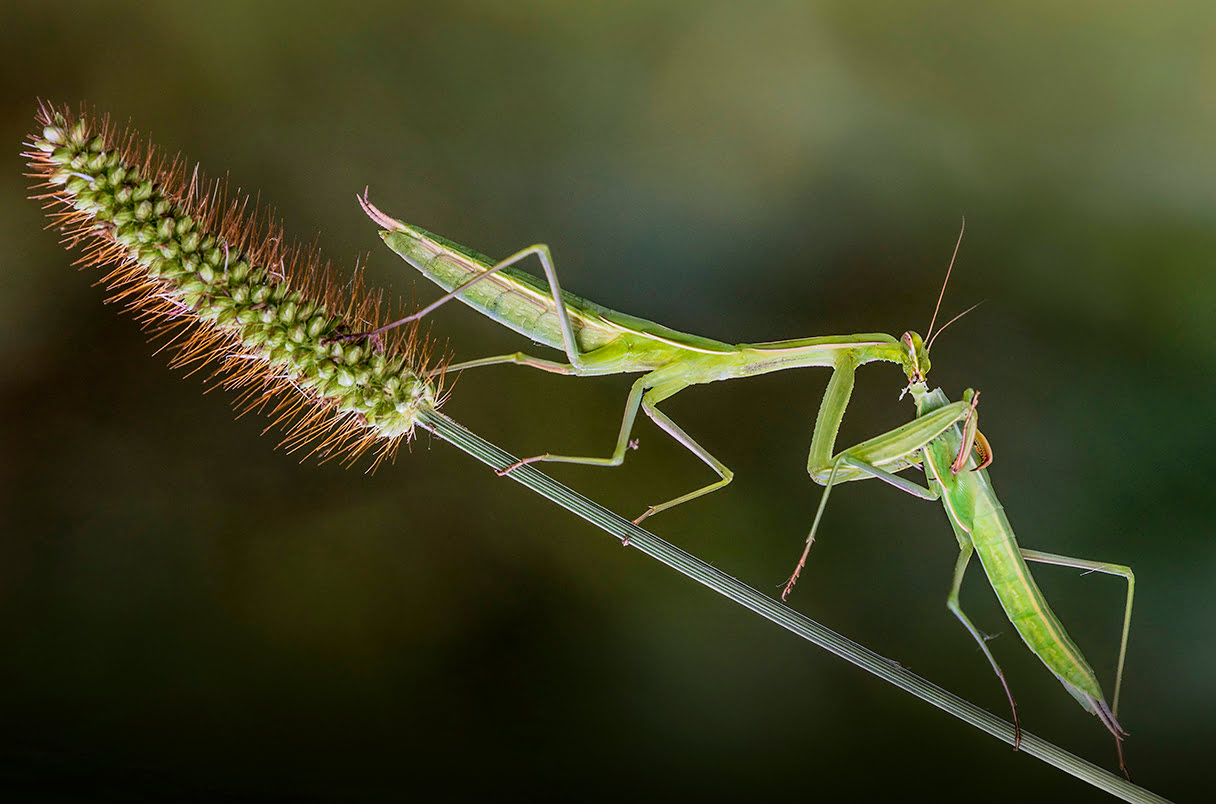Home>Gardening News and Trends>Latest News>What Do Mice Eat Insects
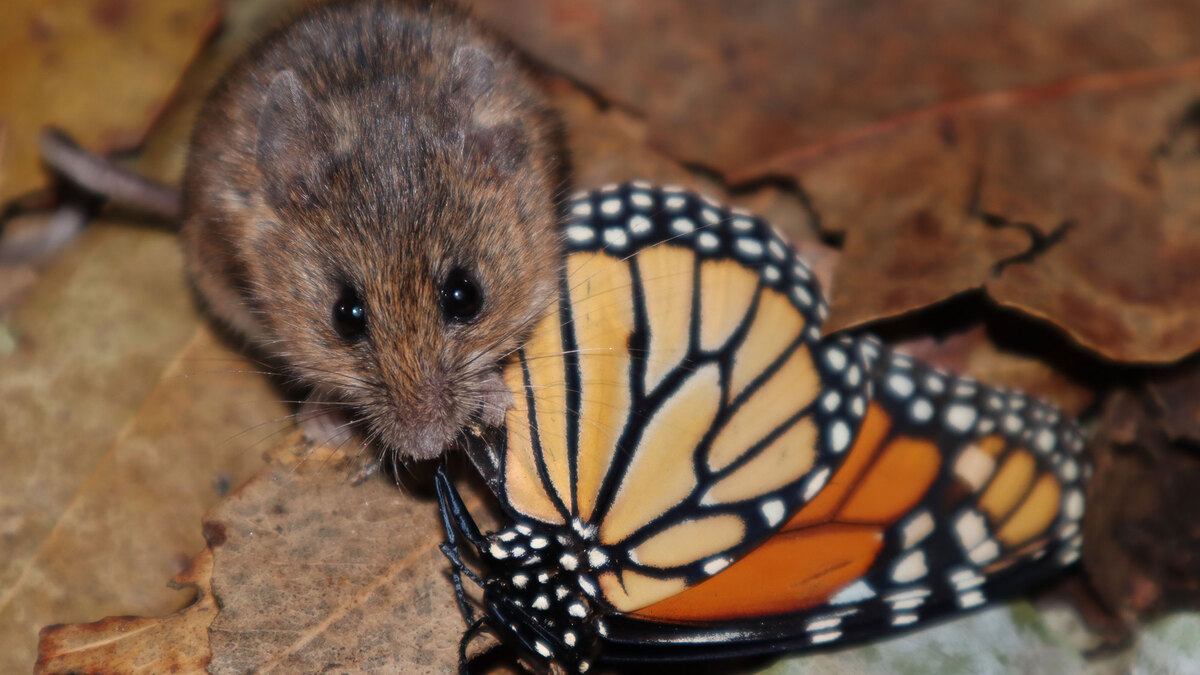

Latest News
What Do Mice Eat Insects
Modified: January 22, 2024
Discover the Latest News on What Mice Eat Insects and Uncover Their Fascinating Dietary Habits. Stay Informed with Our In-Depth Coverage.
(Many of the links in this article redirect to a specific reviewed product. Your purchase of these products through affiliate links helps to generate commission for Chicagolandgardening.com, at no extra cost. Learn more)
Table of Contents
Introduction
Mice are small rodents that are known for their ability to adapt and survive in various environments. They are opportunistic eaters and can consume a wide range of food sources. While mice are often associated with scavenging for scraps of food in human dwellings, their diet also consists of various natural sources.
One crucial aspect of a mouse’s diet is insects. Insects, both dead and alive, play a significant role in the nutritional intake of mice. These tiny creatures offer a rich source of protein, fats, and other essential nutrients that mice require for their growth and survival.
In this article, we will delve into the dietary habits of mice, specifically focusing on their consumption of insects. We will explore the importance of insects in the mouse diet, the types of insects commonly consumed by mice, factors influencing their preference for insects, signs of mouse infestation related to insect consumption, and effective strategies to prevent and control mouse infestations.
Understanding a mouse’s dietary preferences and behavior can be beneficial for homeowners and pest control professionals in managing and preventing issues related to mouse infestations. By providing insights into the significance of insects in a mouse’s diet, this article aims to shed light on the intricate relationship between mice and their preferred food sources.
Understanding the Diet of Mice
Mice are omnivorous creatures, meaning they can consume both plant-based and animal-based foods. Their diet is highly adaptable and can vary depending on their surroundings and the availability of food sources. While mice primarily survive on grains, seeds, and plant matter, they also rely on insects to fulfill their nutritional requirements.
Insects are a valuable part of a mouse’s diet as they provide essential nutrients, particularly protein. Protein is crucial for mice as it supports their growth, muscle development, and overall health. Insects are also rich in fats, which serve as a concentrated source of energy for these small creatures. Additionally, insects offer other vital nutrients like vitamins and minerals that contribute to a well-balanced diet for mice.
Despite having a preference for grains and seeds, mice are opportunistic eaters and will readily consume insects when given the opportunity. They possess sharp incisors that allow them to effectively catch and consume small insects. From beetles to flies and even spiders, mice are capable of capturing and devouring a wide range of insects.
It is important to note that while insects play a significant role in a mouse’s diet, they are not the sole source of nutrition. Mice will consume other food sources such as fruits, vegetables, and even meat if available. Their diet is highly adaptable to their environment, allowing them to survive in different habitats.
As scavengers, mice are well-suited to exploit food sources that are readily accessible. This includes raiding pantries, trash cans, and agricultural fields in search of grains and seeds. However, in natural environments, mice rely on a combination of plant matter and small animals, including insects, to meet their dietary needs.
Understanding the diverse diet of mice, with insects as an integral part, can help us better comprehend their behavior and implement effective control measures when managing mouse infestations. By targeting their preferred food sources, including insects, we can minimize the attraction of mice to certain areas and reduce the likelihood of infestations.
Importance of Insects in the Mouse Diet
Insects play a vital role in the diet of mice, providing them with essential nutrients that contribute to their overall health and well-being. Here are some key reasons why insects are important in the mouse diet:
- Protein Source: Insects are an excellent source of protein for mice. Protein is essential for growth, repair of tissues, and the production of enzymes and hormones. Mice require a sufficient amount of protein in their diet to support their physiological functions.
- Fat Content: Insects are also rich in fats, which serve as an energy source for mice. Since mice are small creatures with high metabolic rates, they need a concentrated source of energy to fuel their activities. The fats found in insects provide calories that enable mice to maintain their energy levels.
- Nutritional Balance: Insects offer a variety of vitamins and minerals that contribute to a well-balanced diet for mice. These micronutrients are essential for various biological processes, including maintaining a strong immune system, promoting healthy organ function, and supporting bone strength.
- Digestive Health: The consumption of insects also aids in the digestive health of mice. Insects contain dietary fiber that helps regulate bowel movements and supports healthy digestion. Fiber-rich insects can prevent constipation and promote optimal gut health in mice.
- Environmental Adaptability: Mice are adaptable creatures that can thrive in various environments, including human dwellings and natural habitats. Insects serve as a readily available food source in both urban and rural settings, ensuring that mice can find sustenance wherever they may be.
The importance of insects in the mouse diet highlights the intricate relationship between these small creatures and their preferred food sources. By consuming insects, mice can acquire the necessary nutrients to support their growth, energy requirements, and overall health.
Furthermore, the presence of insects in a mouse’s diet contributes to their survival and ability to reproduce. By having access to a diverse range of food sources, including insects, mice can maintain their populations and continue to thrive in their respective habitats.
Understanding the importance of insects in the mouse diet can assist in devising effective strategies to manage and prevent mouse infestations. By targeting and minimizing the availability of insect food sources, we can reduce the attraction of mice to certain areas and mitigate the risk of infestations.
Common Insects Eaten by Mice
Mice have a wide-ranging diet when it comes to insects, consuming various species that are readily available in their environments. Here are some common insects that mice often feed on:
- Beetles: Mice have been observed to consume various types of beetles, including ground beetles, ladybugs, and carpet beetles. These insects provide a good source of protein and fats for mice.
- Flies: Houseflies, fruit flies, and other types of flies are commonly consumed by mice. Flies are attracted to decaying matter, making them an easily accessible food source for mice in both indoor and outdoor environments.
- Spiders: While not insects, spiders are arachnids that mice also prey upon. Spiders are known to be protein-rich, making them a valuable food source for mice.
- Cockroaches: Mice are opportunistic eaters and will not hesitate to consume cockroaches if given the chance. Cockroaches are commonly found in human dwellings, making them an easy target for mice looking for food.
- Crickets: Mice will readily feed on crickets when available. Crickets are known for their high protein content, making them a nutritious option for mice.
- Moths and caterpillars: Mice are known to prey on moths and their larvae, including caterpillars. These insects provide a good source of protein and fats for mice.
It is important to note that the specific insects consumed by mice may vary depending on their geographic location and the availability of food sources. Mice are adaptable creatures and will take advantage of the insects present in their environment for their nutritional needs.
In addition to these insects, mice may also consume other small arthropods, such as millipedes, centipedes, and certain species of ants. The range of food sources available to mice allows them to utilize various protein-rich insects and arthropods to meet their dietary requirements.
By understanding the common insects that mice feed on, we can gain insights into their feeding habits and preferences. This knowledge can help us implement effective pest control strategies to target and eliminate these insects, reducing the attraction of mice to specific areas and minimizing the risk of infestations.
Factors Affecting Mouse Preference for Insects
The preference of mice for insects as a food source can be influenced by various factors. Understanding these factors can provide valuable insights into the behavior of mice and help in implementing effective pest control measures. Here are some key factors that can affect mouse preference for insects:
- Availability: The availability of insects in the environment plays a significant role in mouse preference. If there is a plentiful supply of insects, mice are more likely to consume them as a primary food source. This can be influenced by factors such as weather conditions, seasonal variations, and the presence of suitable habitats for insects.
- Alternative Food Sources: Mice are opportunistic eaters and will adapt their diet to the available food sources. If other food options, such as grains, seeds, or human food scraps, are abundant, mice may rely less on insects for their nutritional needs. The availability of alternative food sources can influence mouse preference for insects.
- Protein Content: Mice have dietary requirements for protein, and insects are a rich source of this essential nutrient. The protein content of insects makes them an attractive food option for mice, especially during periods when protein is limited from other sources. The higher the protein content in insects, the more likely mice are to consume them.
- Sensory Perception: Mice rely heavily on their sense of smell and taste to locate and evaluate potential food sources. Certain insects may emit attractive odors or flavors that appeal to mice, influencing their preference for consuming those particular insects. Sensory cues play an integral role in determining mouse preference for specific insect species.
- Learned Behavior: Mice can learn from their experiences and acquire food preferences based on past consumption. If mice have had positive encounters with certain insects, they may develop a preference for those species. This learned behavior can be influenced by factors such as taste, nutritional value, and the absence of negative consequences associated with consuming particular insects.
It is important to note that these factors can vary depending on the specific context and environment in which mice are present. Each mouse population may show different preferences for insects based on their adaptability and surrounding conditions.
Understanding the factors that affect mouse preference for insects helps in devising effective pest control strategies. By targeting the factors that make insects attractive to mice, such as reducing insect populations and limiting alternative food sources, we can discourage mice from relying heavily on insects, thereby reducing the chances of infestations in homes and other areas.
Signs of Mouse Infestation Related to Insect Consumption
Mouse infestations can often be identified by the presence of certain signs that are related to their consumption of insects. These signs can serve as indicators of a mouse infestation and the potential presence of insects in an area. Here are some common signs to look out for:
- Droppings: Mouse droppings are small, pellet-like in shape, and can often be found near areas where mice have been active. If mice have been consuming insects as part of their diet, you may notice insect body parts present in their droppings, such as insect wings, legs, or exoskeleton fragments.
- Nesting Materials: Mice build nests using available materials, and these nests may contain remnants of insects. Inspect areas where mice are likely to build their nests, such as dark corners, attics, or crawl spaces, for signs of insect parts or exoskeletons mixed in with the nesting materials.
- Strange Odors: A strong, musty odor may be present in areas where mice have established their nests. This odor can be intensified if the mice have been consuming insects, as the scent of decaying insects can contribute to the overall unpleasant smell.
- Gnaw Marks: Mice have a need to gnaw on various objects to keep their teeth sharp and in good condition. Look for gnaw marks on surfaces, particularly near areas where food is stored. If mice have been feeding on insects, you may find gnaw marks on insect-filled containers or near entry points where insects are commonly found.
- Noises: Mice are active primarily during the night and can produce scratching or scurrying sounds. If you hear these noises coming from walls, ceilings, or other secluded areas, there is a possibility of a mouse infestation. These sounds can indicate their search for insects or movement within their nests.
- Visible Signs of Insects: While mice consume insects, they may leave behind evidence of insect activity. Look for signs of insect presence, such as chewed or damaged food packaging, insect droppings, or cocoons. The presence of these signs alongside mouse activity suggests a connection between the mice and the consumption of insects.
It’s important to note that the presence of these signs does not always indicate a current mouse infestation. It is essential to conduct a thorough inspection to confirm the presence of mice and implement appropriate pest control measures.
If you suspect a mouse infestation related to insect consumption, it is recommended to seek professional assistance to effectively address the issue. Pest control professionals can identify the extent of the infestation, develop a targeted treatment plan, and implement measures to eliminate both the mice and the insects that may be attracting them.
How to Prevent and Control Mouse Infestations
Preventing and controlling mouse infestations is crucial to maintain a clean and healthy living environment. Here are some effective strategies to prevent and control mouse infestations:
- Seal Entry Points: Mice can squeeze through small openings, so it’s important to seal any potential entry points in your home. Inspect your property for gaps, cracks, and holes, and seal them with caulk or other appropriate materials to prevent mice from entering.
- Proper Food Storage: Store food in airtight containers, including pet food, birdseed, and pantry items. Mice are attracted to easily accessible food sources, so keeping food properly sealed can help discourage their presence.
- Regular Cleaning: Keep your living space clean and free of clutter. Regularly clean areas where food particles and crumbs can accumulate, such as kitchen counters, floors, and dining areas. Mice are less likely to be attracted to clean environments with limited food sources.
- Remove Outdoor Attractants: Maintain a tidy yard by removing debris, trimming overgrown vegetation, and keeping firewood raised and neatly stacked. These measures can eliminate potential hiding places and nesting sites for mice.
- Professional Pest Control: If you suspect or identify a mouse infestation, seek the help of professional pest control experts. They have the knowledge, tools, and experience to address mouse infestations effectively. They can provide treatments, advice on preventative measures, and ongoing monitoring to ensure long-lasting results.
- Use Traps and Baits: Traps and baits can be effective tools in controlling mouse populations. Place traps in areas of high activity, such as near entry points, along walls, or near nests. Be sure to follow the instructions for safe and proper use.
- Maintain Proper Waste Management: Dispose of waste properly by using tightly sealed trash cans, removing garbage regularly, and keeping compost piles well-managed. Mice are attracted to the scent of food waste, so minimizing their access to these areas is essential.
- Regular Inspections: Conduct regular inspections of your property to identify and address potential entry points or signs of mouse activity. Early detection can help prevent infestations from becoming more severe.
It’s important to remember that prevention is key in controlling mouse infestations. By implementing these preventative measures and promptly addressing any signs of infestation, you can help create an environment that is less attractive to mice and reduce the risk of future infestations.
If you are unable to effectively control a mouse infestation on your own or if the infestation persists, it is recommended to consult with professional pest control services. They can provide expert advice and tailored solutions to help you eliminate and manage mouse infestations effectively.
Conclusion
Mice have a versatile diet that includes a range of food sources, with insects playing a significant role in their nutritional intake. Insects provide mice with essential nutrients, such as protein, fats, vitamins, and minerals, which are crucial for their growth, energy needs, and overall health. Understanding the importance of insects in the mouse diet can help us better comprehend mouse behavior and implement effective strategies to prevent and control infestations.
Common insects that mice consume include beetles, flies, spiders, cockroaches, crickets, and moths. Mice show a preference for certain insect species based on factors like availability, alternative food sources, protein content, sensory perception, and learned behavior. By understanding these factors, we can devise targeted pest control strategies to reduce the attractiveness of insects to mice and mitigate infestation risks.
Signs of mouse infestations related to insect consumption include the presence of droppings with insect remnants, the use of insect parts in nests, strange odors, gnaw marks, noises, and visible signs of insects. Identifying these signs can help homeowners detect and address mouse infestations promptly.
To prevent and control mouse infestations, it is crucial to seal entry points, store food properly, regularly clean living spaces, remove outdoor attractants, seek professional pest control assistance when needed, use traps and baits, maintain proper waste management, and conduct regular inspections of the property. By implementing these measures, individuals can create an environment that is less attractive to mice and reduce the likelihood of infestations.
In conclusion, understanding mice’s reliance on insects as part of their diet provides valuable insights into their behavior and can aid in effective pest control strategies. By focusing on the interplay between mice and their preferred food sources, including insects, we can better manage and reduce the risks associated with mouse infestations, creating a safer and healthier environment for both humans and pests.
